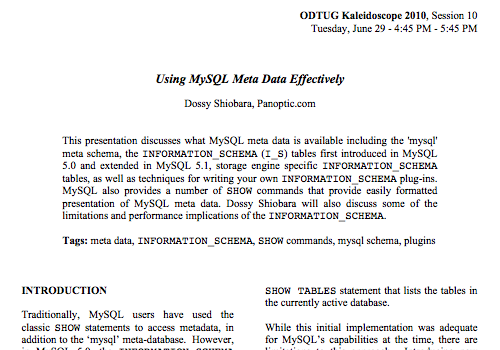Since Oracle owns MySQL through its acquisition of Sun, more Oracle conferences are providing MySQL content. This past Oracle Development Tools User Group (ODTUG) Kaleidoscope 2010 conference from June 27 through July 1 had a whole dedicated track for MySQL.
I was fortunate enough to have the opportunity to speak on MySQL metadata, titled “Using MySQL Meta Data Effectively“. Here’s the abstract:
This presentation discusses what MySQL meta data is available including the ‘mysql’ meta schema, the INFORMATION_SCHEMA (I_S) tables first introduced in MySQL 5.0 and extended in MySQL 5.1, storage engine specific INFORMATION_SCHEMA tables, as well as techniques for writing your own INFORMATION_SCHEMA plug-ins. MySQL also provides a number of SHOW commands that provide easily formatted presentation of MySQL meta data. Dossy Shiobara will also discuss some of the limitations and performance implications of the INFORMATION_SCHEMA.
You can download the materials from my session here:


Latest comments